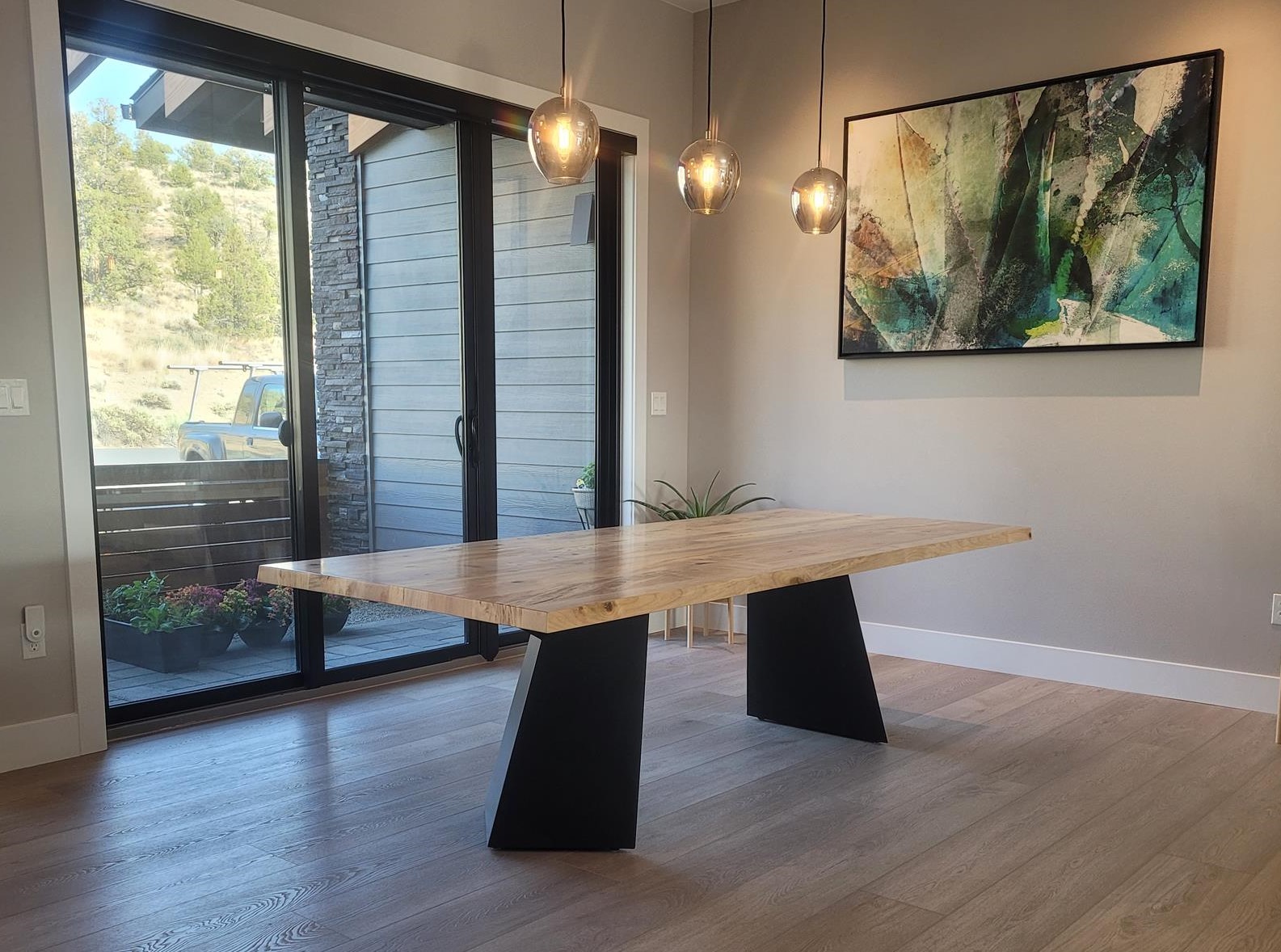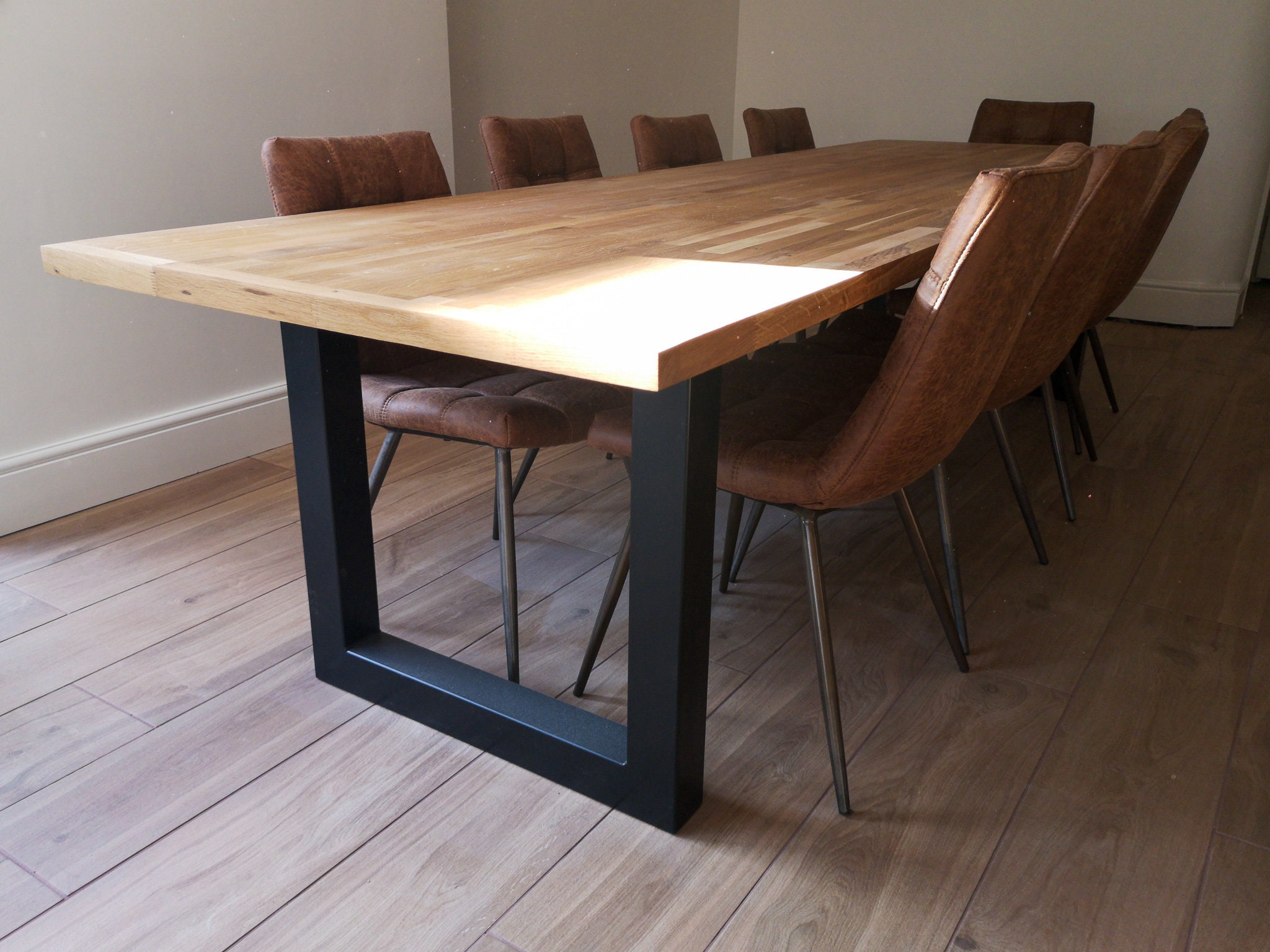Upgrade Your Furniture with Fashionable Dining Room Table Legs
Wiki Article
Picking the Perfect Table: What Styles Job Best for Your Home?
Picking the excellent eating table for your home can be a nuanced process that balances appearances and capability. To navigate these selections successfully and discover a table that truly enhances your home, think about the following aspects in detail.Assessing Your Space
Reviewing the dimensions and design of your dining location is a crucial first action in choosing the excellent eating table. Begin by determining the size and width of the room, making up doorways, windows, and various other building functions that can influence table positioning. This makes sure that your table not only fits but additionally enables comfortable activity around it.Consider the number of people you generally delight. A table needs to accommodate your home's day-to-day demands while providing adequate versatility for periodic guests. As a regulation of thumb, allocate a minimum of 24 inches of table size each to make certain a comfortable dining experience.
It's likewise vital to keep proper clearance around the table. Ideally, there should go to the very least 36 inches in between the table edge and wall surfaces or other furnishings, enabling very easy gain access to and motion. For rooms where chairs with arms or extra storage space units like buffets are entailed, boosting this clearance to 48 inches is suggested.
Lighting and environment play considerable functions also. Make certain that your table straightens with existing lights fixtures or prepare for sufficient lights remedies. This thorough spatial assessment guarantees that your eating table not only fits physically yet also integrates with your room's overall performance and visual.
Popular Table Styles

Conventional table usually feature elaborate information, bent legs, and rich timber finishes, evoking a sense of timeless style. They are best for homes with traditional decoration or those seeking to add a touch of elegance to their eating location.
Modern eating tables focus on simpleness and tidy lines, commonly incorporating products like glass and metal. These tables are optimal for modern areas, providing a smooth and clean look that complements minimalist design philosophies.
Rustic table, on the other hand, emphasize natural products and a handcrafted look - dining room table legs. They frequently include reclaimed timber and a distressed surface, creating a warm and welcoming atmosphere. These tables function well in farmhouse-style homes or those looking for a comfy, organic feeling
Industrial eating tables combine raw materials such as metal and wood, often showcasing a practical aesthetic. This design is appropriate for loft spaces or urban rooms, adding a touch of sturdy beauty and resilience to the eating experience.
Each design supplies distinctive advantages, making it essential to select one that straightens with your home's overall style and your individual preferences.
Material Choices
When choosing a dining table, the option of product plays an essential duty in identifying both the table's visual appeals and capability. Timber, steel, glass, and composite products each offer special advantages and challenges, making it vital to straighten the product with your home's design and lifestyle demands.Wood is a classic and versatile choice, available in varieties such as oak, walnut, and mahogany. Known for its sturdiness and warmth, wood matches both conventional and contemporary insides. Nevertheless, it needs regular upkeep to protect against scratches and warping.
Metal tables, often crafted from stainless steel, light weight aluminum, or wrought iron, are commended for their modern allure and toughness. They are particularly fit for commercial or minimalist setups yet can be prone to damages and might feel cold to the touch.
Glass table bring an air of style and openness, ideal for smaller sized areas as they produce an impression of even more room. While very easy to tidy, glass can be susceptible to smudges and needs cautious taking care of to prevent chips and cracks.
Composite products, such as MDF and plywood, deal economical and adjustable services, though they might lack the long life of all-natural materials. Selecting the best product ensures your eating table is both a useful property and a visual joy.
Sizes And Shape Factors To Consider
After determining the proper product for your table, the following consideration is choosing the ideal shape and size to fit your area. The shape of the table significantly affects the space's aesthetic and performance. Rectangle-shaped tables, one of the most usual form, are suitable for bigger areas and can accommodate a higher number of guests. They additionally permit an extra official dining experience. Conversely, round tables cultivate a sense of intimacy and are outstanding for smaller eating areas, encouraging discussion by eliminating corners and making everyone feel similarly consisted of.Dimension is equally essential and should be determined by both the space's dimensions and the number of individuals you prepare to seat consistently. As a guideline of thumb, assign a minimum of 24 inches of table size per individual to guarantee comfortable eating. Additionally, consider the table's clearance room: there need to go to least 36 inches between the table edge and the walls or other furnishings. This guarantees that diners can walk around quickly without feeling confined. Prolonging tables use flexibility if you regularly host larger events, providing extra seating when required without occupying added Discover More Here area daily. Selecting the right sizes and shape makes sure both usefulness and visual consistency in click for more info your eating area.
Matching Your Style
Choosing a table that harmonizes with your existing style is essential in developing a natural and welcoming space. Begin by evaluating your existing interior decoration style, whether it be contemporary, standard, rustic, or diverse. The table need to enhance the general visual, not compete with it. As an example, a streamlined, minimalist table with tidy lines is optimal for a modern-day home, while a vintage, luxuriant table matches an extra traditional setting.
Color and material are equally considerable. If your design features cozy tones and all-natural products, think about a wood table to enhance the organic feel. On the other hand, a glass or steel table may be a lot more proper in an area controlled by amazing shades and industrial aspects. Take note of the coating, as it ought to mirror various other furniture and components to keep consistency.
A rough-hewn, reclaimed wood table can include character to a rustic area, while a refined marble surface can elevate a glamorous dining location. A well-matched dining table not only enhances aesthetic allure yet also enriches the total eating experience.

Verdict
Picking the optimal table requires careful consideration of space, style, materials, form, official website and size (dining room table legs). Standard tables complement timeless insides with abundant wood surfaces, while modern-day tables match modern setups with glass and metal. Rustic layouts introduce heat via natural products, and commercial styles enhance urban environments with raw components. Harmonizing the table with existing design ensures both performance and aesthetic allure, contributing to a cohesive and visually pleasing dining location.Report this wiki page